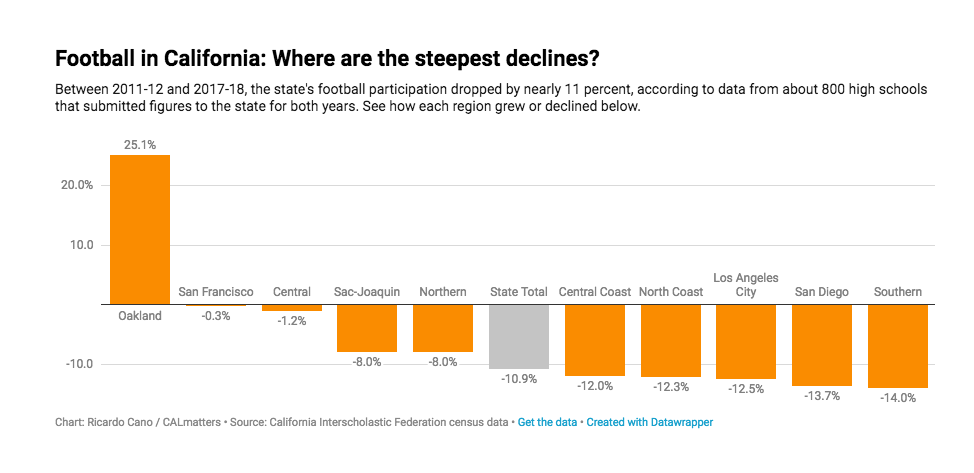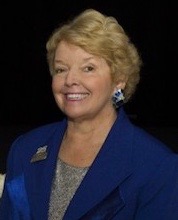Daily Business Report-Feb. 1, 2019
Image courtesy of Cushman & Wakefield
San Diego’s life sciences sector
performing at an all-time high
Region continues as epicenter for innovation and R&D
Increased investment and employment in the life sciences sector has driven life sciences related real estate to new heights, according to Cushman & Wakefield’s new report, Life Science: Great Promise & Rapid Growth.

The research provides a big-picture overview of the life sciences sector and its impact on commercial real estate as well as more granular insights into 13 top life sciences markets in the U.S. and Canada.
Thanks to an influx of venture capital as well as billions of dollars in funding from the National Institute of Health, the life sciences sector has grown nearly five times as fast as the economy since 2000, adding 85,000 jobs, with roughly 70 percent of that job growth (61,000) in the past eight years. This is primarily a response to an aging population with increased longevity. By 2030, there will be 73 million Americans aged 65 or older, equating to 20.6 percent of the population, compared with 40.5 million Americans in this cohort in 2010.
“Life sciences has been, and will continue to be, a major growth driver for the U.S. economy for decades,” said Greg Bisconti, Cushman & Wakefield executive director and leader of the firm’s Life Sciences Advisory Group. “Essentially the tech area of health care, the life sciences sector has become a broad and growing collection of everything from diagnostics, genetic reading and writing and personalized medicine to medical device technology, pharmaceutical research and development, and much more. Those forces, in turn, drive increased demand for lab space in both gateway and secondary markets across North America.”
Over the past decade, basically two sets of forces have been driving the acceleration of growth in this sector – demand for health services soars as the population ages and the technology enabling life science leads to greater supply of new products, which in turn has led to historically high investment in this sector.
___________________

Cheer for the Rams, but in California high schools,
even football powerhouses are losing kids
By Ricardo Cano| CALmatters
If the Golden State has a rooting interest in the Super Bowl on Sunday, it won’t just be because the Los Angeles Rams will be on the field. Roughly one player in six on the Rams’ and New England Patriots’ active rosters is a product of California high schools. Year after year, California has churned out top-tier recruits who go on to play football in college and then the NFL.
But the state that produced Tom Brady, Jared Goff and Julian Edelman is also in the thick of national trends that are fueling a decline in football participation, largely because of concerns over head injuries and competition from less aggressive sports.
Even parts of the state known to be football powerhouses have experienced significant declines in high-school football participation, a CALmatters analysis of statewide data shows.
Figures from the California Interscholastic Federation, the governing body for high school sports in California, and the National Federation of State High School Associations have shown consistent decreases in the number of high-school students in California turning out for tackle football over the past decade.
In an effort to gain an apples-to-apples comparison of where and how football programs across the state have been impacted by participation declines, CALmatters analyzed data for nearly 800 public and private high schools that submitted 11-player football participation figures to the state in the 2011-12 and 2017-18 school years.
Because not all schools submitted data for both years, and because some programs switched to 8-player football, not every school is represented, but the data do cover most of the 877 high schools tallied by state and national censuses in 2017-18.

In this time span these 800 or so schools—large, small and spread throughout California’s ten CIF “sections,” or regions—saw a nearly 11 percent decline in football participation overall, from about 81,500 participants in 2011 to 72,600 students in 2017.
Those figures more or less concur with estimates by the state governing organization, which reported an approximate 13 percent statewide decline in football over the past decade. Across the country, participation has gone down roughly 5 percent since 2011, the national association reports.
The drop in California has been steeper in some part of the state than in others, the analysis found. The CIF’s small Oakland Section, for instance, has actually gained players. And in the Central Valley, the decline has scarcely registered. The CIF Central Section, home to historically competitive football regions in Fresno and Bakersfield, saw almost no drop in participation. The 83 schools in the region that submitted data for both years collectively lost about 100 boys’ athletes, or a decline of about 1 percent.
But in the massive CIF Southern Section—a cohort of hundreds of schools including nationally known programs and spanning most of the counties in Southern California—roughly one player in seven over the last six years has dropped off the roster.
The data show growth in participation in only a fraction of schools and only a couple of regions. Only about 50 of the nearly 800 schools included in CALmatters’ analysis gained 30 or more football players between 2011 and 2017. But 168 football programs showed losses of 30 players or more. In the most extreme examples, the decline essentially halved some schools’ rosters:
Chino Hills High School in San Bernardino County had 250 kids in its football program in 2011; that number was down to 100 last year.
The football program at Vista Murrieta High School in Riverside County went from 307 players to 175 in those six years, according to the data.
And at Servite High School in Orange County—which won a state championship in 2009 and where the Class of ‘03 included Patriots star special teamer Matthew Slater, the son of the Rams’ Hall of Famer Jackie Slater—football participation has dropped from 275 kids in 2011 to 148 last year.
So far, the decline hasn’t jeopardized California’s standing as a dominant pipeline for collegiate and professional football. Only a fraction of high school players ever get recruited to play in college, let alone the pros. And football still is the most popular boy’s sportin California, which is the nation’s most populous state.
However, it comes amid a tense and highly publicized debate in the state over the safety of the sport, with legislators last year unsuccessfully pushing a bill last year to ban youth tackle football for children under age 12. Though the authors of that bill appear to have backed off this year, new legislation backed by youth football advocates would limit contact time for youth programs.
Roger Pielke Jr., director at the Sports Governance Center at University of Colorado, said that while “football is in a relatively healthy condition,” the numbers in California and nationally point to signs that “we in the United States are past peak football.”
“It’s undeniable at this point that there’s been a decline in this sport,” Pielke said, adding that youth and high school participation indicate “at a minimum, a slow attrition.”
The declines have had a pronounced impact on some programs, including Healdsburg High School in Sonoma County, which made headlines last year when the varsity team cancelled its season due to low numbers.
“We do not consider them quitters at all,” Principal Bill Halliday told CALmatters in September, adding that in Healdsburg, “Friday night lights is very much a big part of the community.”
But having only 18 players to field meant that many kids had to play offense, defense and special teams throughout entire games. After the second game of the season, players met and voted whether to continue—a particularly heartbreaking choice for seniors in their final season.
“Their parents could feel the pain of their sons, and it pains them,” Halliday said. “It was not easy for anybody.” But, he added, “We think that they very much made a decision and perceived correctly that the situation wasn’t sustainable,” Halliday said.
The state’s participation data also indicate some schools in recent years switched from 11-player to 8-player football programs, which still involve full contact but with smaller teams.
Weed High School, about 70 miles north of Redding, was among the programs that made the switch, in part because of low participation and declining enrollment that allowed it to meet the state’s threshold for 8-player schools, said Steve Neel, the school’s athletic director.
Weed’s programs fielded 28 boys for 11-player football in 2011, according to state data, and had gone down to 18 players by 2017, when the Weed Cougars competed in an 8-player league.
“We just really felt for us to compete and for the safety of our kids that it was important to move 8-man,” Neel said.
The switch paid off, Neel said. The school was more competitive in an 8-player league and there were fewer injuries. In past years, the school had to fold teams because of low numbers.
Weed will again play in an 11-player league this fall in part because of a student enrollment hike that bumps it out of 8-player eligibility, Neel said, though the varsity roster is projected to field only 13 players. But at least, he added, the school still has a program.
“I thought we might in some respects have a chance to lose football at Weed High School,” Neel said.
And football lovers have gotten creative on other fronts. Last year, Democratic Assemblymembers Kevin McCarty of Sacramento and Lorena Gonzalez of San Diego introduced Assembly Bill 2801, which would have barred students from playing tackle football until high school.
Believing the legislation went too far, youth football supporters formed a grassroots coalition, called the California Youth Football Alliance, and mounted a successful social media campaign to oppose the bill. Eventually AB 2108 was pulled by McCarty and Gonzalez before being heard in a committee.
This year, a representative for Gonzalez said the Assemblywoman had no plans to introduce similar legislation, and McCarty said this week that he is “exploring the issue once again, but no definitive answer yet.”
Meanwhile, Assemblyman Jim Cooper, a Democrat from Elk Grove, introduced AB 1 this session, which would limit youth football programs to two full-contact practices per week at a cap of 60 minutes per day, as well as ban full-contact during the offseason. Those regulations are similar to recent ones the state enacted on high schools.
“The California Youth Football Alliance came to me, they understand there are risks with playing football, and they asked that it be regulated.” Cooper said. “They want to make sure it’s safe for their children.”
Cooper said the bill represents a “good medium” for making the sport safer for the state’s youngest students. “It doesn’t have to be either or.”
Still, the trend is what it is, with or without legislation, said McCarty.
“Every month, another study surfaces outlining the risks of youth tackle football. Every month, another NFL legend speaks up and questions the wisdom of youth tackle football,” he noted.
“But more importantly, parents see the risks and are voting with their feet.”
CALmatters.org is a nonprofit, nonpartisan media venture explaining California policies and politics.
___________________

Second rail line now in service in Cardiff-by-the-Sea
Coastal Community Primed for a Rail Line Quiet Zone
As part of the San Elijo Lagoon Double Track Project, SANDAG construction crews simultaneously launched a new rail line service and completed necessary improvements at the Chesterfield Drive rail crossing in Cardiff-by-the-Sea. The project began in early 2017 and adds approximately 1.5 miles of second main track from Cardiff-by-the-Sea to the southern border of the San Elijo Lagoon. This new segment of double tracked rail line creates more than four miles of continuous double track in the LOSSAN coastal rail corridor.
The second track features a new concrete rail bridge, put into service last September, which replaced the original 80-year-old wooden trestle bridge that had been in use since the early 1940s over the San Elijo Lagoon inlet. This new rail bridge contributes to the long-term health of the lagoon as its support columns allow for increased tidal flows. Adding the secondary track along the LOSSAN rail line improves both the service and efficiency of the coastal rail corridor for commuters and freight alike as it eliminates the need for passing trains to take turns using a single track and will help meet future service.
SANDAG construction teams also completed significant safety and efficiency improvements at the Chesterfield Drive rail crossing, between San Elijo Avenue and Coast Highway 101, in Cardiff-by-the-Sea. This project enhances bicycle and pedestrian safety and accommodates the city of Encinitas’ future Quiet Zone for Cardiff-by-the-Sea, which eliminates the need for train engineers to sound the train horn when approaching the at-grade crossing. The Quiet Zone will take effect after a formal review and approval is granted by the Federal Railroad Administration, which is expected in the coming months.
___________________
San Diego’s DeskHub snapped up
by co-working company Cross Campus
By Sarah de Crescenzo | Xconomy San Diego
Cross Campus, a shared office-space provider with five locations in the Los Angeles, CA, region, has snapped up DeskHub in the latest step in a plan to expand its West Coast presence.
DeskHub, one of San Diego’s oldest co-working companies, has about 500 members across two locations: a 23,000-square-foot space in Little Italy and about 15,000 square feet of space in Scottsdale, AZ. Cross Campus has a total of about 185,000 square feet across the Los Angeles area and about 2,500 members.
BisNow first reported the deal. Terms aren’t being disclosed.
___________________
La Jolla Institute awarded renewal of NIH contracts
La Jolla Institute for Immunology has been awarded a $22 million contract renewal over seven years from the National Institutes of Health (NIH) to host and expand the Immune Epitope Database (IEDB). The database is the world’s most comprehensive collection of scientific data on how the immune system responds to a wide range of infectious agents, allergy-causing substances, and other stimuli that activate the immune system.
___________________
Cal State San Marcos President
to deliver final Report to the Community

Cal State San Marcos President Karen Haynes will deliver her 15th and final Report to the Community on Thursday, Feb. 7.
More than 600 individuals representing a broad cross section of regional business, nonprofit, education and government leadership are expected to attend the sold-out event where President Haynes will highlight CSUSM accomplishments, trends and the 29-year-old institution’s role in advancing the public good.
During the event, President Haynes will announce the final fundraising total of Forward Together, the university’s first comprehensive campaign, a seven-year initiative that officially ended on Dec. 31. The goal for the campaign was $50 million.
This will be the final Report to the Community for President Haynes, who announced in September that she will be retiring at the end of the current academic year.
Other speakers at the event will be Mark Cafferty, president and CEO of the San Diego Regional Economic Development Corporation; Lorena Checa, CSUSM vice president of Student Affairs; and Jack Raymond, a regional philanthropist and the chair of the CSUSM Foundation Board. The emcee will be Patricia Prado-Olmos, CSUSM vice president of Community Engagement.
Breakfast and registration begin at 7 a.m., with the formal program starting at 8 a.m.
Where: On campus at the Event Pavilion in Lot N, located off Campus View Drive.
Parking: Complimentary parking will be available in CSUSM parking structure
___________________

Latitude 33 Aviation takes delivery of 2 new Cessna jets
Latitude 33 Aviation, a private jet charter, executive jet management and aircraft sales and acquisition company in Carlsbad, has taken delivery of two factory-new Cessna Citation Latitude jets, further expanding its fleet of charter aircraft. The increase to the premium aviation company’s midsize and super-midsize aircraft portfolio provides increased availability for nonstop coast-to-coast and international flights. The two state-of-the-art, midsized aircraft will join the high-end operator’s existing fleet of managed aircraft, bringing Latitude 33 Aviation’s total fleet size to over 30 private jets.
The Citation Latitude was designed to maximize passenger comfort with a flat floor, six feet of cabin height and the widest interior of any Citation on the market. It has a maximum range of 2,850 nautical miles (5,278 km) and a four-passenger range of 2,700 nautical miles (5,000 km).



